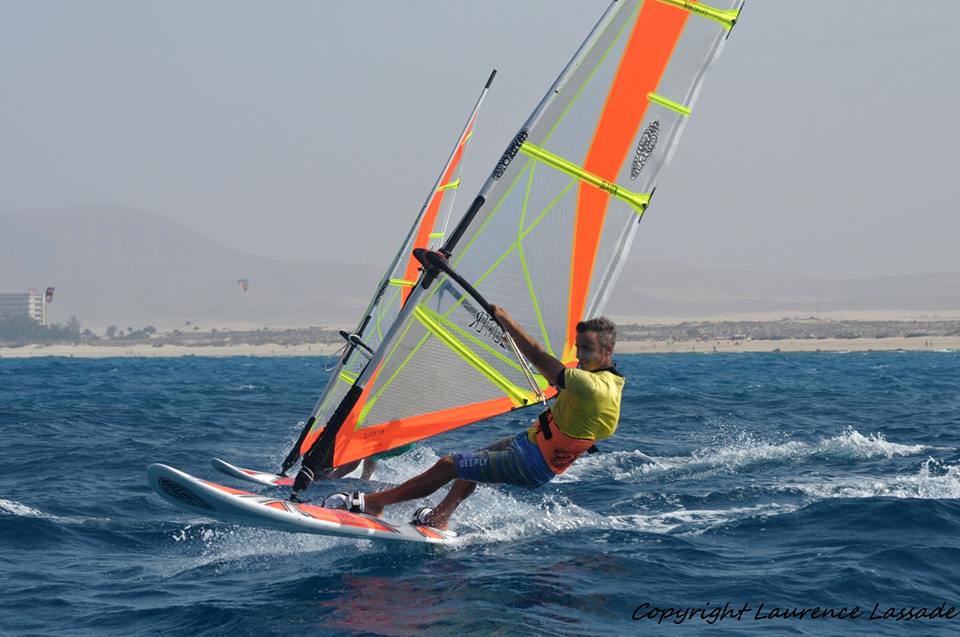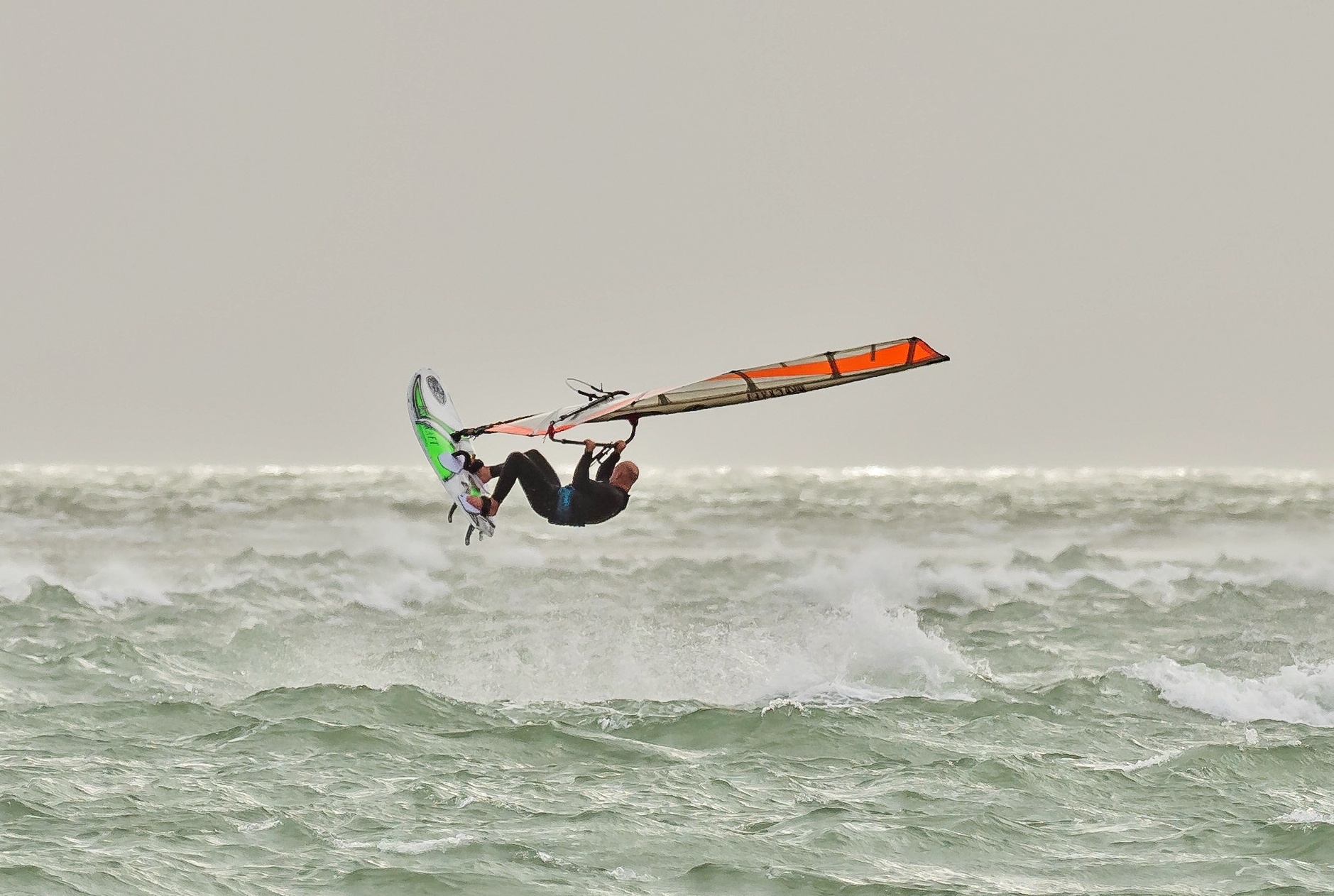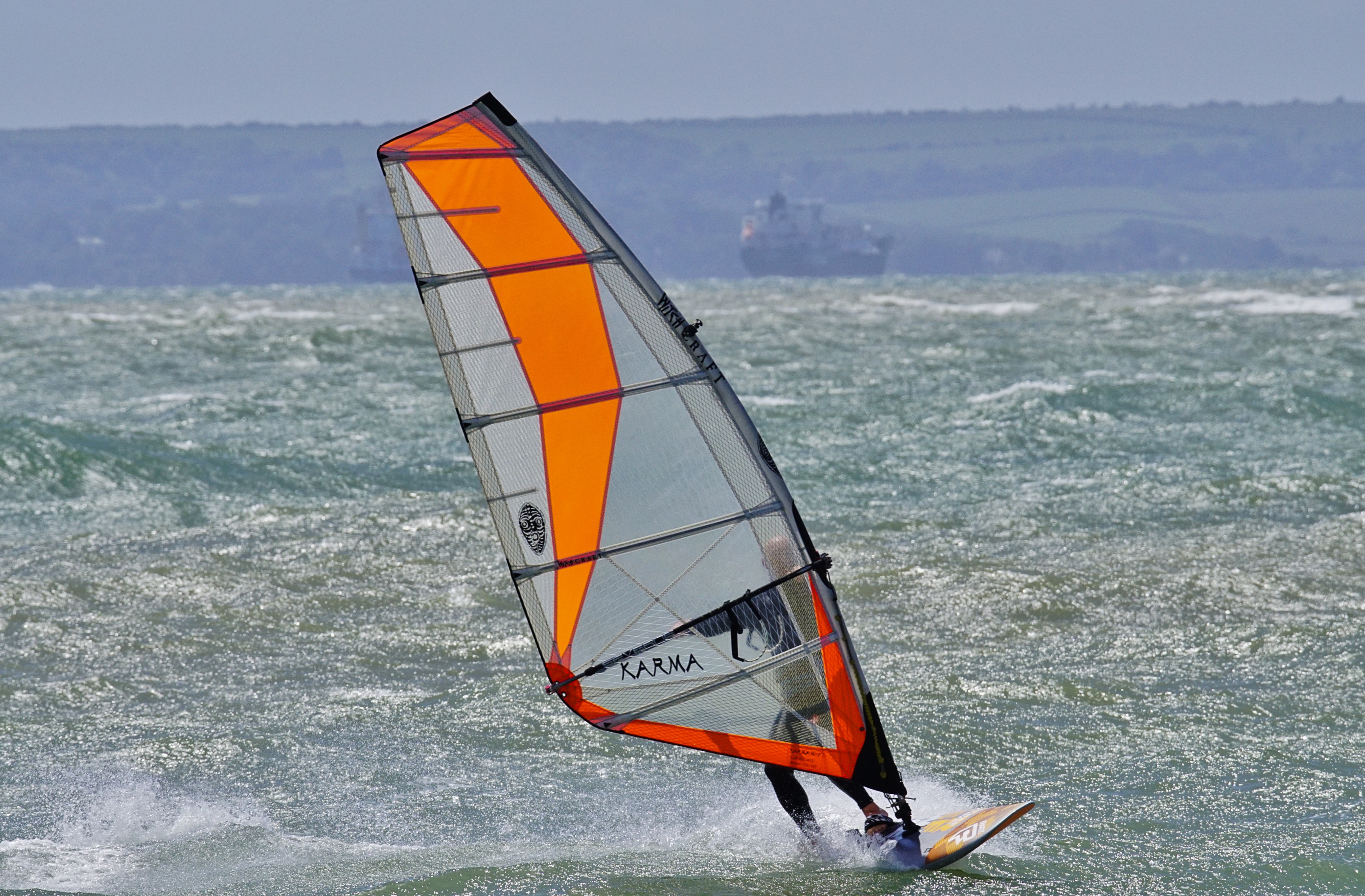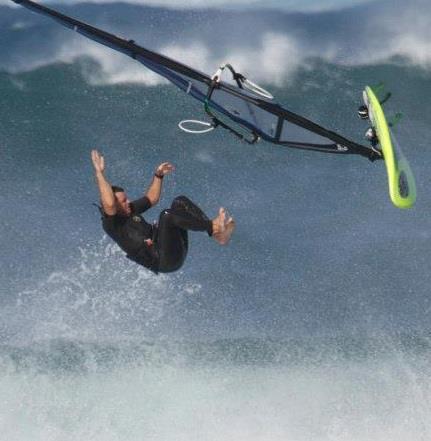If you’ve aspirations of shredding perfectly peeling waves, but haven’t quite got the necessary skills (yet), then there a few drills you can practice on flat water that’ll help no end. As any proficient rider knows muscle memory is everything so being able to repeat movements is key. Read on for how to ready yourself for surf sailing and spice up those flat water sessions in the process.
Long jump
Being able to jump long and land still planing is an effective way of making it through white water. You don’t need height, in fact too much height will kill forward momentum which is what you’re trying to achieve here. Simply being able to send it long ways is a key ingredient to getting out back in the most efficient manner possible (in planing conditions).
S-turns
Performing planing s-turns, carving rail to rail whilst opening and closing the sail during each arc is exactly the same movement employed during bottom and top surf style turns. The idea is to keep your speed up and not drop off the plane which will start and give you an idea of how much rail pressure you can apply. To some degree downwind and upwind 360s also help.
‘Surf the boom’
In almost every move within windsurfing you’ll need to be fluid on the boom with hand movements. Sailing as if they’re stuck with superglue doesn’t yield the best results – even more so when wave riding. ‘Surfing the boom’ refers to opening and closing the gap between your hands during each section of the turn. Spreading wide during the bottom turn, or leeward rail carve on flat water, before closing the gap and bring hands closer together when carving back in the original direction of travel is a key element. The more you can open the sail, subsequently with a wider grip, the easier riders will find bottom turning in onshore winds. This is much needed skill and one definitely not to overlook.
Fast tack
Most windsurfers get hooked on learning to carve gybe from almost the minute they can plane. While all well and good, plus fulfilling, possibly the most efficient turn – especially in wave sailing – is being able to fast tack. This move will see riders stay upwind and therefore better positioned for dropping in on the most critical part of the wave. When sailing in marginal, under powered conditions it’s the only turn you’ll need.
Slogging (non-planing)
For the smoothest wave riding the bare minimum of wind is needed – particularly when talking side offshore, down the line conditions. (Once on a wave you’ll have more than enough apparent wind power for slashy turns). This does mean, however, that you’ll be spending some time slogging upwind, possibly against a current, and therefore practice of this skill is essential. It also means you can get back to your landing should the wind die, even on low volume boards. You may need a proactive approach but it’s certainly doable.
Self rescue
From a safety aspect being able to derig your kit and paddle back to shore is a skill that sometimes gets overlooked. Even on flat water sometimes this may be required. Kit breakages can sometimes occur whilst in waves; you may wreck a sail and have no other means of propulsion. Being adequately prepared and nailing down self rescue technique will stand you in good stead whatever windsurf scenario you find yourself.
The above is in no way conclusive of all the skills you can practice in readiness for wave sailing, but they’ll set you off on the right path preparing you to some degree for that next level shredding.







